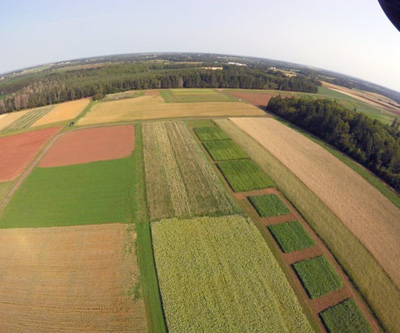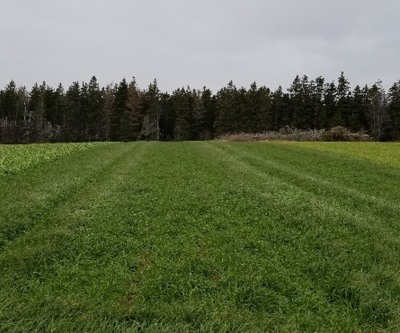Canadian farmers are good stewards of the land and have long cared for the environment. They are on the front lines of climate change, and the first to feel its effects. To adapt to the new climate reality, Agriculture and Agri-Food Canada (AAFC) and farmers are working together to speed up the adoption of more environmentally friendly practices and technologies in order to protect the environment and continue to be leaders in sustainable agriculture.
This is the mantra behind Living Lab – Atlantic, a four-year research collaboration between AAFC, farmers and environmental organizations on Prince Edward Island (PEI) that began in 2019. There are over 20 PEI farms along with dozens of scientists and technicians across Atlantic Canada participating in Living Lab – Atlantic. Their research is addressing several key areas impacting farmers, including soil health, water quality management and crop productivity. The farming practices they are studying and expertise gained will be shared with farmers across Canada to increase adoption.
This series of four articles takes you through the different Living Lab - Atlantic sites across PEI to showcase the work farmers and scientists are doing to contribute to environmental sustainability in agriculture.
On our first stop, we travel about 15 minutes north of the AAFC Charlottetown Research and Development Centre to the AAFC Harrington Research Farm in Harrington, PEI. Living Lab – Atlantic co-lead scientist, Dr. Judith Nyiraneza, has discovered that winter cover crop varieties planted post-harvest prove to be beneficial to the environment and to soil quality.

In humid climates, there is a high risk of topsoil loss from erosion on bare soil as well as nitrogen from fertilizers leaking or leaching from the soil into water sources, which can cause groundwater pollution. This is especially true in the fall, after potato harvest, and in the spring, due to melting snow.
Planting cover crops is gaining momentum in potato-growing regions across Canada due to their ability to reduce soil erosion. In PEI, for example, approximately 40 per cent of farmers’ fields had cover crops planted after harvesting potatoes, according to a 2019 survey by the PEI Potato Board.

Potato fields harvested in the late summer and early fall are prime candidates to be seeded with cover crops. In PEI, fields harvested before mid-October typically have enough time to establish a good green cover before winter.
Dr. Nyiraneza tested the performance of winter rye, winter wheat and spring barley as winter cover crops planted following the harvest of potatoes. She used splash pans in cover crop fields to measure soil movement caused by rain drops, the soil’s vulnerability to be transported through erosion, and the amount of carbon and nitrogen in it.

“All three winter cover crops – winter rye, winter wheat and spring barley – showed substantial promise,” explains Dr. Nyiraneza. “They decreased the risk of soil erosion and reduced the amount of carbon and nitrogen that would be lost in soil, compared with no winter cover control.”

Dr. Nyiraneza is working with Living Lab – Atlantic farmers to assess the success of different cover crop species, different seeding rates, and different dates of crop establishment in order to provide advice to farmers that makes economic sense, as well as increasing environmental sustainability.
In the end, it looks like keeping the ground covered as much as possible, minimizing the time the soil is left bare – after potato harvest or ahead of potato planting – is a win for the environment and farmers’ pocketbooks.
Stay tuned next time as we head to Spring Valley, PEI.
Visit Living Lab – Atlantic for more information about the initiative.
Get more Agri-info
- Want more stories like this? Explore what else Agri-info has to offer.
- Interested in reporting on this story? Contact AAFC Media Relations at aafc.mediarelations-relationsmedias.aac@agr.gc.ca to arrange an interview with one of our experts.